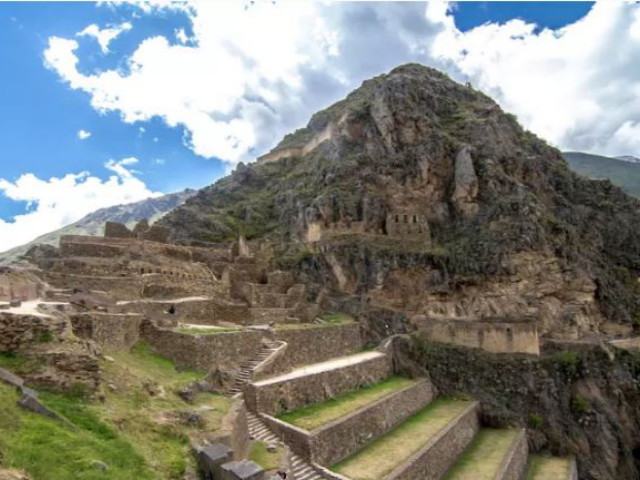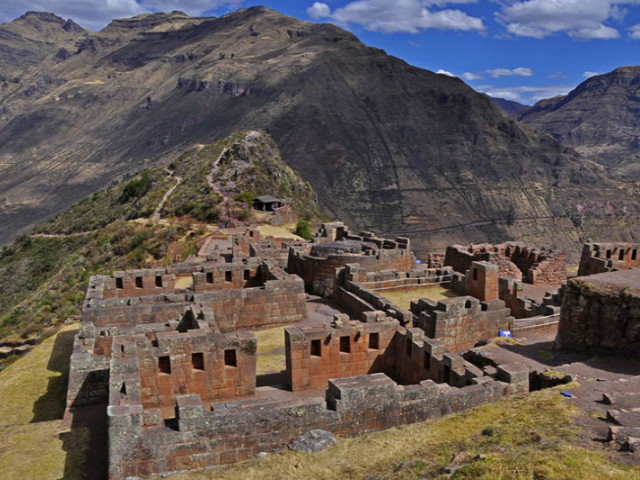Cusco, a city in the Peruvian Andes at 11,000 feet elevation (3350 m), was once capital of the Inca Empire, and is now known for its archaeological remains and Spanish colonial architecture. Plaza de Armas is the central square in the old city, with arcades, carved wooden balconies and Incan wall ruins.
The baroque Santo Domingo Convent was built on top of the Incan Temple of the Sun (Qoricancha), and has archaeological remains of Inca stonework.
Sacred Valley of the Inca at 9000 feet (2750 m) elevation is a region in Peru's Andean highlands and the gateway to Machu Picchu. The steep Inca ruins at the Ollantaytambo Fortress loom over the north side of the town of Ollantaytambo. They are famous for being one of the few places where the Incas defeated Spanish conquerors in a major battle.
|
|
Machu Picchu is an Incan citadel set 8,000 feet elevation (2,500 m) in the Andes Mountains in Peru, above the Urubamba River valley. Built in the 15th century and later abandoned, it’s renowned for its sophisticated dry-stone walls that fuse huge blocks without the use of mortar, intriguing buildings that play on astronomical alignments and panoramic views.
It was probably the most amazing urban creation of the Inca Empire at its height; its giant walls, terraces and ramps seem as if they have been cut naturally in the continuous rock escarpments. The natural setting, on the eastern slopes of the Andes, encompasses the upper Amazon basin with its rich diversity of flora and fauna.
The approximately 200 structures making up this outstanding religious, ceremonial, astronomical and agricultural centre are set on a steep ridge, crisscrossed by stone terraces. Following a rigorous plan the city is divided into a lower and upper part, separating the farming from residential areas, with a large square between the two. To this day, many of Machu Picchu’s mysteries remain unresolved, including the exact role it may have played in the Incas’ sophisticated understanding of astronomy and domestication of wild plant species. |
Inti Raymi begins at Qoricancha, the Temple of the Sun. As the sun’s first rays emerge, the Inca (the emperor of the Quechua people) announces the beginning of the festival as the armies from the four suyos (regions) of the Inca Empire, Collasuyo, Contisuyo, Antisuyo, and Chinchaysuyo, converge upon the temple grounds.
In the next phase, the procession, along with the Inca, the Qoya (the main wife of the Inca) and the nobility carried by dozens of porters on separate elaborately decorated litters, head to the Plaza de Armas, the main square, where the coca leaf prophesy is performed. The sacred coca leaves are read for clues about the coming year. In “the meeting of the two times,” the Inca advises the modern-day Mayor of Cusco on what to expect and what actions to take in the coming year.
During the third phase, the procession moves to Sacsayhuaman, the imposing ruins overlooking Cusco. Here, three rituals are performed: the Chicha ritual, the Fire ritual, and the Llama ritual. Brilliantly costumed dancers come together and dance in celebration of their Andean heritage to the music of the pinkullo and the tinya (instruments similar to the flute and a small drum, respectively). The ritual ends as each of the brilliantly colorful armies form an enormous contingent and march together, signaling the end of the elaborate ceremony.
|








